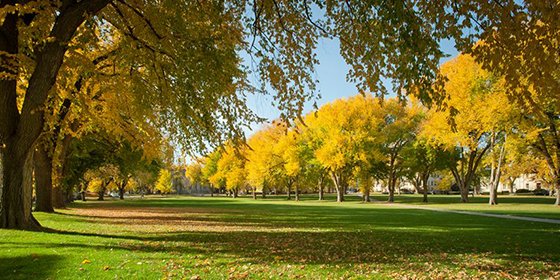
OUR BLOG
Beneath the Branches
Tree care tips, local insights, and expert guidance from Denver’s trusted arborists. Whether you're dealing with Emerald Ash Borer, prepping for winter, or planning your next prune, we dig into the details that keep Denver’s urban forest thriving—one yard at a time.
Spring Plant Health Care in the Denver Metro Area
As spring arrives in the Denver Metro area, trees, shrubs, and plants awaken from dormancy, requiring proper spring maintenance to ensure your landscape thrives throughout the growing season while protecting against pests, diseases, and environmental stress.
Potential $1 Billion Economic Impact of The Emerald Ash Borer on Denver County
The Emerald Ash Borer (EAB) has killed millions of ash trees, costing billions. Denver could face up to $1B in losses if all its 210,000 ash trees die, with removal costs, lost property value, and replacement expenses. Prevention and treatment are key.
South High Street Trees – Norway Maple
Norway Maples, a popular new tree along South High Street in Denver, grow 60-90 feet tall and have tough bark and bright yellow fall foliage. They're less susceptible to storm damage and are recommended by the Colorado State Extension Service.
Why Do Trees Drop Their Leafs?
The Hippopotamus is the closest relative to the whale, illustrating how species adapt to environments. Similarly, deciduous trees evolved to drop leaves to conserve water and food in dry climates, helping them thrive globally. Denver’s urban canopy has increased humidity.
Biological Control of the Emerald Ash Borer
The Tetrastichus planipennisi wasp, released in Boulder to combat emerald ash borer (EAB), targets EAB larvae by laying eggs that feed on them. With up to 100 eggs per host, it helps slow EAB spread. Other wasps may be introduced this summer for further control.
Winter Watering Your Landscape Plants
Each year brings more warm, dry days into fall and winter, and this year is no different. Though trees slow down in October, they’re still alive. Warm, dry days can wake them, much like poking a hibernating bear. Keep them hydrated and healthy.
Horse Chestnut Trees
Horse Chestnut trees, native to Greece and the Balkans, are known for their spiny seedpods and shiny brown seeds. They grow 40-70 feet tall, bloom with white flowers, and are disease-resistant, making them a charming addition to Denver landscapes.
What Does it Cost to Remove a Tree and Stump?
DLC Arbor Services often gets calls asking about tree removal costs, but pricing depends on many factors and can't be estimated over the phone. It’s like asking the cost to paint a house without seeing it. However, general cost guidelines are available.
Prune Trees Before It Snows Again
The biggest threat to Denver trees isn’t insects or disease—it’s snow on leafed-out trees. Heavy snow in spring or fall can break branches or topple trees, especially those with weak growth or improper pruning. Young trees are especially vulnerable.
Denver’s Spring Snow Storms
Denver’s weather brings late spring and early winter snowstorms, causing tree damage when heavy snow weighs down leafed-out branches. Silver maples and catalpas need regular pruning to stay strong. DLC Arbor prunes, protects, and removes trees.
Cottonwoods in Denver
Cottonwood trees consume 100 gallons of water daily, grow large, drop limbs year-round, and shed cotton in the fall. Maintaining them requires regular pruning, and removal is a major task best handled by professionals like DLC.
My Favorite Trees in Denver – Western Catalpa
Western Catalpa trees thrive in Denver, growing fast with stunning white flowers and long bean pods. They need little water but have brittle branches. Pruning helps prevent breakage. Need tree care? Call DLC.
Surprising Tree Count on South High Street
South High Street’s tree landscape is changing, with 270 trees lining the public right-of-way. Many aging Silver Maples and American Elms are being replaced with Norway and Sugar Maples. Get an expert opinion from DLC.
Denver A City Of Trees – That’s Not Natural
Denver’s trees were all planted, as the city was once treeless except for streamside cottonwoods. Washington Park has over 70 species, including historic American Elms. City arborists promote tree diversity—call DLC Arbor for expert advice.
The Stump from Hell
The Ailanthus altissima, or "Tree from Hell," is invasive, fast-growing, and tough to remove. DLC Arbor faced a brutal two-week battle with a stump embedded in rebar and concrete. Need expert tree removal? Call us today.
Anatomy of the Tree
Remember junior high biology? Trees have three parts: roots, trunk, and crown. Each year, they grow in height and spread by adding new growth to branch twigs.
Silver Maple: Denvers Most Common Shade Tree
Monoculture tree plantings can have long-term issues. Silver maples, with soft bark and wood, are prone to fungal infections and wood rot, making them unstable. Large branches may break unexpectedly. If a silver maple leans, removal is essential for safety.
Emerald Ash Borer Radio Commercials
Radio ads about emerald ash borer (EAB) treatments are common, signaling both a growing threat to ash trees and a profit opportunity. In Boulder, EAB has been found, but the infestation hasn't spread far. Treating ash trees with insecticides is crucial for protection.
What is the Worth of a Tree?
Trees enhance neighborhoods, provide shade, and add value to homes—up to 10% of property value. Denver’s trees are worth $2.6–$5.2B! Infestations like EAB threaten them. Stay informed and protect your trees.




















